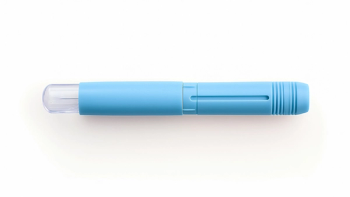
- Pharmaceutical Executive-08-01-2014
- Volume 0
- Issue 0
Social Media Struggles Continue
Tweeting limited, corrections okay, says FDA, as industry, regulators wrestle with the digital world. Our Washington Correspondent Jill Wechsler reports.
The Internet and interactive social media provide an efficient, low-cost way to send messages fast to millions of people—and to targeted patient populations. But pharma companies have been slow to take advantage of these methods, largely because of FDA rules that control what manufacturers can state about their products. FDA has been rolling out new guidelines for using interactive media in recent months. The new guidances clarify some murky areas, but may not make online communications any easier.
Jill Wechsler
FDA's Office of Prescription Drug Promotion (OPDP) provides some useful advice in its new advisories, which were discussed further in an OPDP webinar July 10 (slides available at
A second draft guidance gives marketers some leeway to correct misinformation on drugs and medical devices posted on the Internet by independent third-parties. Corrections of "user-generated content" (UGC) have to be truthful and not misleading, apply only to messages outside company control, and should not be used as "a springboard to engage in promotional messaging," explained attorney Jeffrey Wasserstein on the FDA Law Blog (
Marketers don't have to inform FDA of every corrective posting, but should keep a record of such communications. That advice builds on another FDA guidance published in January 2014 that aimed to simplify how marketers should inform OPDP of Internet postings. FDA acknowledges that presubmission is not practical for continued participation in social networks and online forums; after initially submitting information on a website, OPDP permits companies to send in a monthly list of its postings, while keeping records of postings on file.
But in trying to define which communications are a marketer's responsibility and thus should be submitted, this earlier guidance raised a lot of objections from industry. Marketers complained that the guidance makes them responsible for too broad a range of Internet postings and question whether tweets and "likes" constitute advertising or labeling—or really fall under "free speech" that lies outside FDA rules.
A final guidance is slated to address FDA's concerns about using links to other Internet sites that discuss drug risks and benefits. FDA has warned against connecting to off-label information, and that a "one-click" process for linking to full risk and benefit information does not satisfy its requirements for fair balance and full disclosure.
FDA also includes on its list of social media guidances a document published in December 2011 on how industry can respond to "unsolicited requests" for off-label information—both online and in public meetings. OPDP advised marketers to provide answers to such questions privately and off-line, an approach that remains in effect despite loud objections that it's impractical and confusing.
Nothing new
These social media guidances reflect FDA's continuing struggle to reconcile drug advertising regulation with changing information technology. The agency held a hearing on FDA & the Internet back in October 1996 to explore appropriate pharma use of websites and chat rooms. The discussion addressed strategies for correcting erroneous product information posted on the Internet, manufacturer use of links to other websites, and impact of rules set by the Federal Trade Commission and international agencies—all issues that were not resolved and remain controversial today.
Sunshine gets murkier
Meanwhile, FDA ramped up citations for noncompliant Internet messages, culminating in 14 violation notices in 2009 to companies sponsoring search engine ads that lacked full risk information. Other letters held companies accountable for statements from third-party websites and blogs. Marketer objections prompted another FDA public hearing in November 2009, where dozens of industry representatives and IT vendors demanded changes in FDA rules to better fit the digital age. The agency's response was to propose new research on how consumers respond to risk information presented on various websites. So Congress added a provision to the FDA Safety & Innovation Act of 2012 (FDASIA) requiring the agency to address social media communications by July 2014.
Even with the new advisories, pharma companies may continue to lag far behind other industries in utilizing the Internet to communicate important information to the public. Drugmakers have been using social media primarily for corporate operations—announcing financial reports, hiring employees, recruiting clinical trial investigators and participants, and disease awareness. There is disagreement over how effective the Internet is for detecting adverse drug events. And it's not clear how pharma can utilize opportunities to implement "multi-channel" marketing to support new product launches and to reach targeted patient populations.
The irony of the social media marketing debate is that patients increasingly turn to the Internet to search for health information, identify possible treatments, and confirm diagnoses. FDA, itself, is a heavy user of social media to announce new approvals, broadcast safety warnings, and raise policy issues.
FDA's insistence that marketers convey only truthful and balanced information on products also ignores developments that permit outside parties on all sides to weigh in on company claims and present alternative positions. Increased transparency in research results and treatment recommendations, readily available through Internet websites and social media, speaks to the need for new regulatory approaches by FDA and much greater enforcement "discretion."
Jill Wechsler is Pharm Exec's Washington correspondent. She can be reached at
Articles in this issue
over 11 years ago
Country Report: Chileover 11 years ago
Emerging Pharma Leaders 2014over 11 years ago
A Window on the Industry: The Emerging Pharma Leaders 2014Newsletter
Lead with insight with the Pharmaceutical Executive newsletter, featuring strategic analysis, leadership trends, and market intelligence for biopharma decision-makers.





